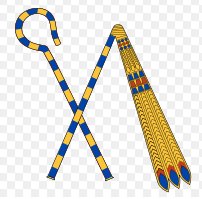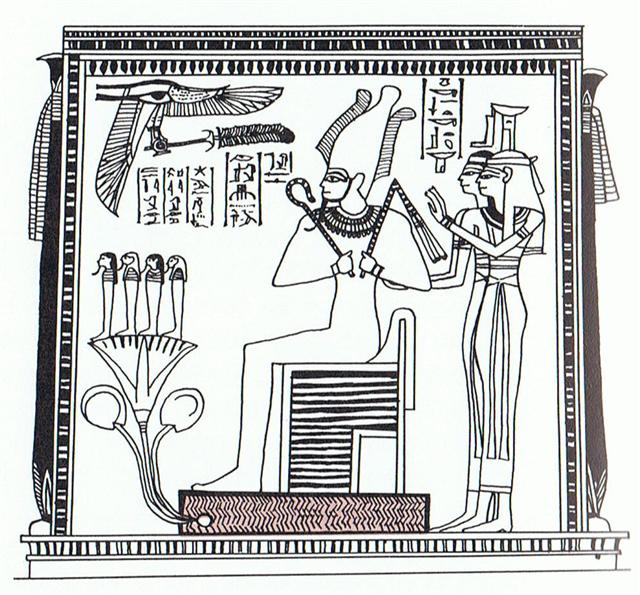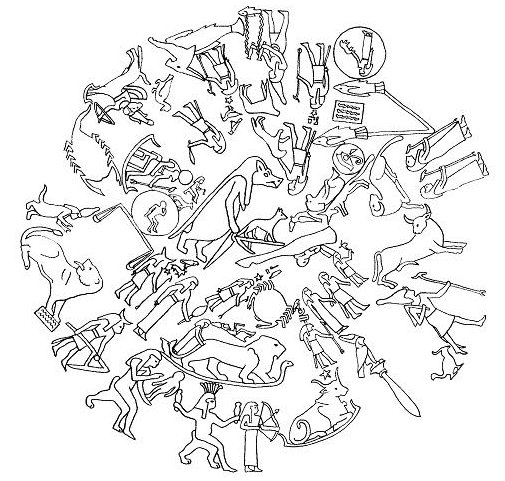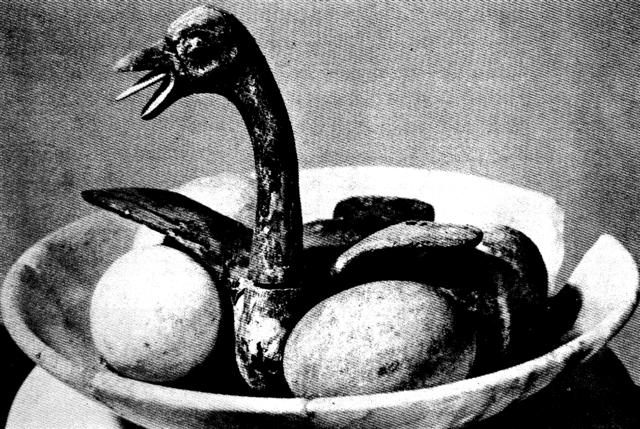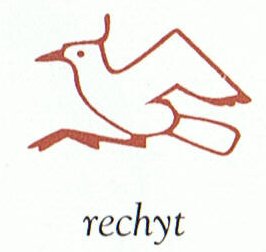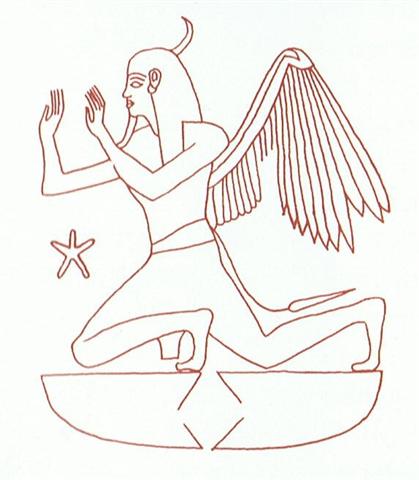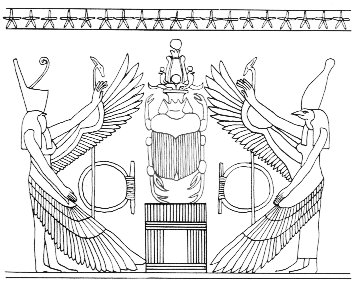Pharaoh carried a crook and a flail in normal circumstances, the crook in his left hand and the flail in his right (according to Wikipedia):
But at his inauguration the flail was changed into a Will: '- that my father has given me before Geb. I have passed through the land and touched the four sides of it. I traverse it as I desire ... The flail is an instrument for threshing and the crook is for the shepherd. I have seen it used (by way of TV) on Crete, where the shepherd caught a sheep by the throat with the crooked end of his staff. It was easily done and the poor animal was hauled in for the slaughter. In the picture above we can count to 12 + 12 = 24 units of measurement on the crook and 13 on the flail, and together crook and flail basically describe the form of 'X': ... Mummies of pharaohs have their arms crosswise over their chests according to a TV program I happened to watch. The Inca kingdom was called Tawantinsuyu = 'the indivisible four quarters of the world' and the Inca himself was ruling in its center (Cuzco) ... But a 14th unit 'expands' into the 3 beautiful 'arrows' on the right side of the flail, ending below the rest of the arrangement. The crooked end of the crook, on the other hand, is higher up than the rest. Like a sickle the crook spells 'end', while contrariwise the flail ought to spell 'birth'. The sheep are grazing above ground, but the grains are growing down in the earth, and Geb was the god of earth. Counting units on the right part of the flail is difficult because the picture is not sharp enough, but beyond the 'elbow' (at the top) I guess we can find 3 * 36 = 108 units. We can see 19 yellow and 1 red wedge on each 'arrow' in the lower part, i.e. 3 * 20 = 60 units. If I have guessed right then there will be 108 - 60 = 48 more to identify. There are 2 + 2 + 1 = 5 blue units on each of the 3 arrows, and 3 * 5 = 15. There might be 3 * 9 yellow wedges higher up, i.e. 3 * 9 + 3 * 19 = 3 * 28 = 84 yellow units in all. The red ones are 3 * 3 = 9. Summing up: 15 (blue) + 84 (yellow) + 9 (red) = 108. That the design of the arrangement is 'cosmic' in character seems to be beyond doubt. The distinction left-right (for crook respectively flail) was probably of no great importance in Egyptian art, and instead the major distinction apparently is front side (crook) contra back side (flail), which can be seen for instance in the following picture (from Wilkinson):
The 4 sons of Osiris are here standing on top of a flower growing from a 'mata' in the water basin at center bottom. The picture is from the 19th dynasty (around 1200 BC). In the Dendera zodiac the bluemarked 'Orion' sign apparently is a pharaoh, because he carries a flail in his right hand and a was staff in his left:
The crook is not there, which is as it should be if Spring Sun has 'fallen' (cfr the preceding Taurus). According to Wilkinson the earth god Geb (who was married to Nut, the goddess of the Sky) was often depicted as a man with a goose on his head. In Budge's Book of the Dead we can read: "Seb or Qeb ... the fourth member of the company of the gods of Annu, was the son of Shu, husband of Nut, and by her father of Osiris, Isis, Set, and Nephthys. Originally he was the god of the earth, and is called both the 'father of the gods' ... and the 'erpā ... (i.e., the tribal, hereditary head) of the gods'. He is depicted in human form, sometimes with a crown upon his head and sceptre ... [was hieroglyph] ... in his right hand; and sometimes he has upon his head a goose, which bird was sacred to him. In many places he is called the 'great cackler' ... and he was supposed to have laid the egg from which the world sprang.
(picture from Wilkinson, at sesch - bird nest) Already in the pyramid texts he has become a god of the dead by virtue of representing the earth wherein the deceased was laid." Cfr also at vae kore, where Kenkenur (the Great Cackler) is suggested (in Hancock 3) to be an alias for the phoenix, and where the Easter Island sooty tern is read as 'sunbird', manu-te-ra). The bird behind 'Osiris' is not a goose, but maybe there is a goose diametrically opposite, above Sagittarius. But it could be a lapwing (rechyt):
In the composition at right we can see that the wing at the back is similar to the back side of a flail. This view is strengthened by the fact that the last 3 'arrows' are grouped separately from the following 7. Then comes a gap with 3 'threads', followed by 8 more but different kinds of 'feathers'. 3 + 7 = 10 could refer to the sun, while 8 could refer to the moon. A gap separates them. Wilkinson says that early (ca 3000 BC) the lapwing seems to have symbolized the captured peoples of Lower Egypt. The little forward oriented crest together with the 'shadowing wing' may serve as marks of identification, I suppose. The great star in front of the 'human lapwing' is interesting. At mauga the following picture was presented, and in the crown of Lower Egypt at left we can see that the 'scroll' resembles the crest of a lapwing - though reversed (maybe the peoples of Lower Egypt now were on par with those of Upper Egypt):
The sacred geography of ancient Egypt ought to have had the bluemarked zodiacal signs (those below the ecliptic in summer) corresponding to Lower Egypt. |
